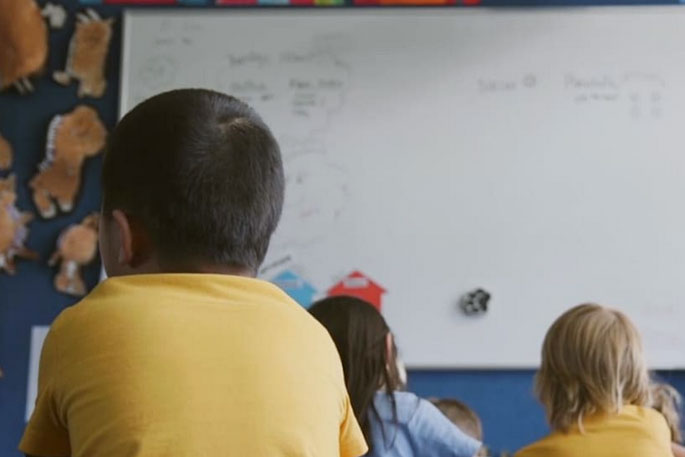Schools have more pupils than ever after an immigration-driven surge in enrolments pushed the national school roll to 831,038 children.
The Education Ministry's mid-year roll count shows schools grew by 15,887 pupils since the same time last year, the biggest increase on records that go back to 1997.
The rise follows a record 11,421-pupil drop in enrolments in 2022 and a 225-pupil increase in 2021.
More than half this year's increase happened in Auckland where rolls grew three per cent or 8144 children, the biggest jump in 20 years, and in secondary schools which grew by 9348 students nationally or three per cent.
Canterbury and Otago also experienced strong growth. Schools in Canterbury had two per cent or 2177 more children than last year, their largest increase on record, while in Otago rolls jumped by 709 children or two per cent.
The Education Ministry says borders re-opening and immigration are the primary driver behind this year's enrolment increase.
"In line with recent figures indicating rising immigration inflow, there is an increase of about 8600 ākonga on Domestic Time-Bound visas, which are held by dependent children of certain time-bound visa holders, such as persons on certain time-limited work or study visas.
"There is also an increase of about 6800 new ākonga on New Zealand Resident visas. This is about four times higher than in recent years and may be linked to the granting in 2022 of a one-time residence visa to about 200,000 people who were living in New Zealand during the pandemic.
"There has also been an increase of about 3000 international students, which represents a return to the level that international student numbers were at two years ago."
Pressure being put on schools
In Auckland, schools in Howick and Hibiscus and Bays grew most with growth of five per cent or 1590 and 843 students respectively.
In Howick, Macleans College principal Steve Hargreaves says the effect is obvious.
"We are enrolling students in a steady stream right throughout the year and that is not something that typically happens.
"Usually students arrive at the start of the year, maybe at the start of the new term but this year it's been right throughout the year and it just hasn't stopped."
Hargreaves says the college now has 200 more students than at the same time last year and two factors are driving the growth at his school.
"The borders are wide open and there are a lot of people moving to New Zealand and the second thing that affects us in particular is in-fill housing around our school.
"We're seeing a lot of single-dwellings demolished and in their place four to six townhouses are going up and families are moving into them and they're bringing school-age students."
Hargreaves says the rapid growth puts pressure on the school.
"We are well over 100 percent capacity this year. We have students being taught in seminar rooms and common spaces.
"We've taken it upon ourselves to build five board-funded classrooms this year, so those classes will be available in January with the idea really that they were going to be to regrow our international student market but it turns out they are probably going to have to accommodate domestic students."
'The children have very, very little English'
Hargreaves says the school also needs more specialist teachers of English for Speakers of Other Languages because many of the new students are the children of people with work visas and English is not their first language.
"We previously had about 100 funded ESOL students per year and that was a number that was pretty steady for a number of years. This year we have 300 funded ESOL students."
Hargreaves says other schools in east Auckland have also experienced a wave of new immigrant students and it's not clear if it would slow down.
"My fear is that while the immigration settings are pretty much wide open we are going to keep receiving more students from overseas.
"The time lag for getting property built is quite long and the students, they don't sit around and wait three years while you create space on your school site and get a property project under way, they turn up and need to be taught on the spot so we could be in a jam next year."
Bucklands Beach Intermediate principal Diane Parkinson says she has never seen such rapid growth and the school has jumped from a steady roll of about 800 Year 7 and Year 8 children to about 950 this year.
She says most of the new enrolments are new immigrants who speak very little English and arrived at the school without warning.
"We have an interpreter, we have a few teachers who can speak, for example Mandarin it was this morning, so we get them to come into the office with the deputy principal to interview the child and their family."
Parkinson says finding enough classroom space is tricky and the high number of English-language learners is hard on teachers.
"The children have very, very little English so it's been a real struggle for classroom teachers when teaching 11 to 13-year-olds."
Auckland Secondary Principals Association president Greg Pierce says this year's growth is significant and the association's members had been talking about it constantly.
Pierce says unfortunately, schools that need more classrooms to cope with the growth will have to wait because the Education Ministry is prioritising repairs to schools damaged by Cyclone Gabrielle earlier this year.
He says previous forecasts suggest Auckland schools alone could grow by 30,000 students by 2030.
Sarah Roper from TESOLANZ (Teachers of English to Speakers of Other Languages) says there's a shortage of qualified, experienced ESOL teachers.
She says some schools are coping with the increase in immigrant students by increasing the hours of their ESOL teachers, or using existing staff who had an ESOL teaching certificate.



0 comments
Leave a Comment
You must be logged in to make a comment.